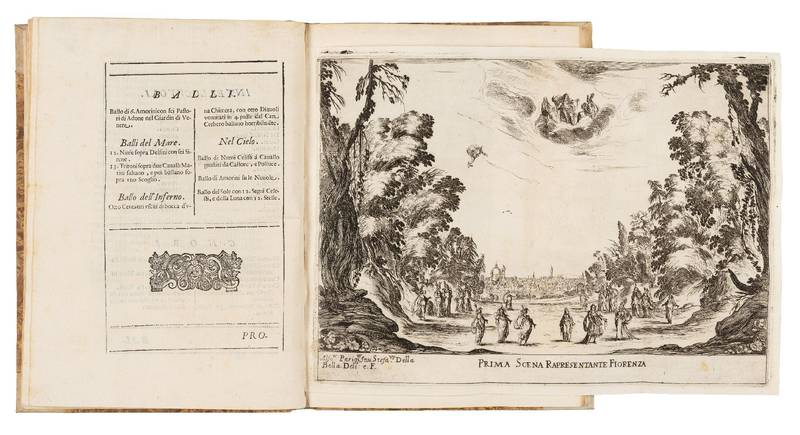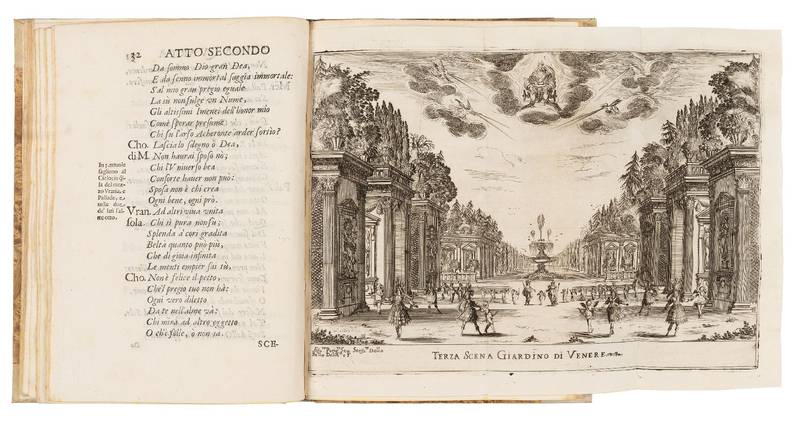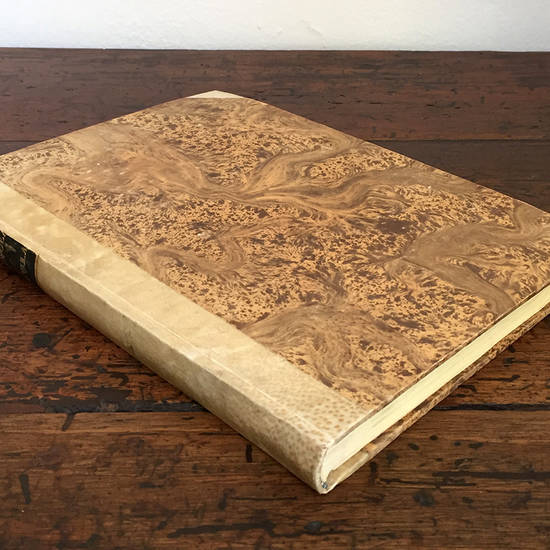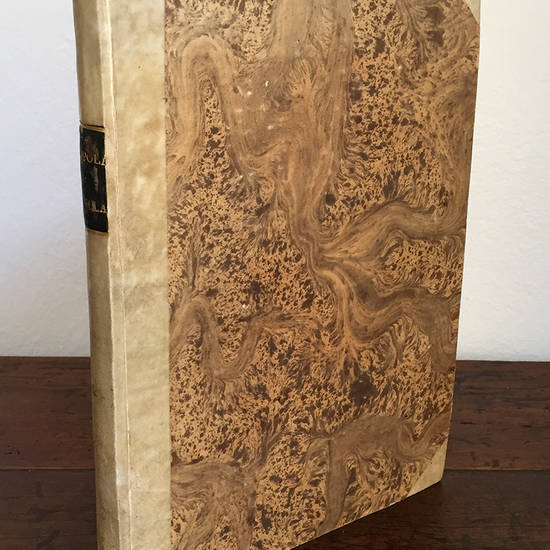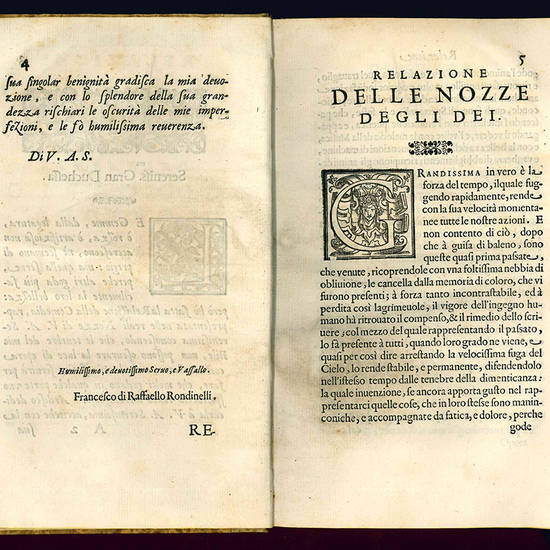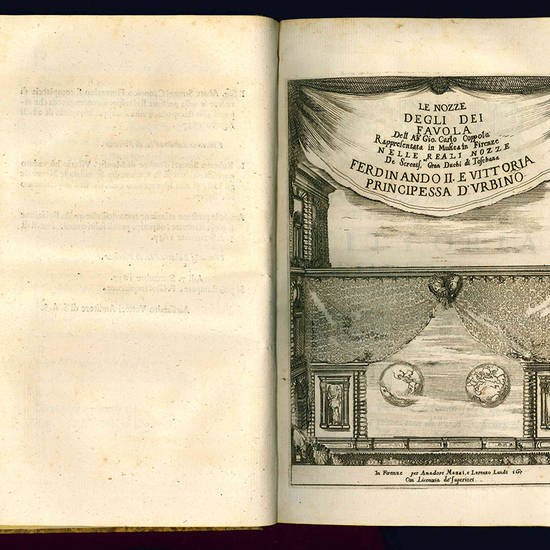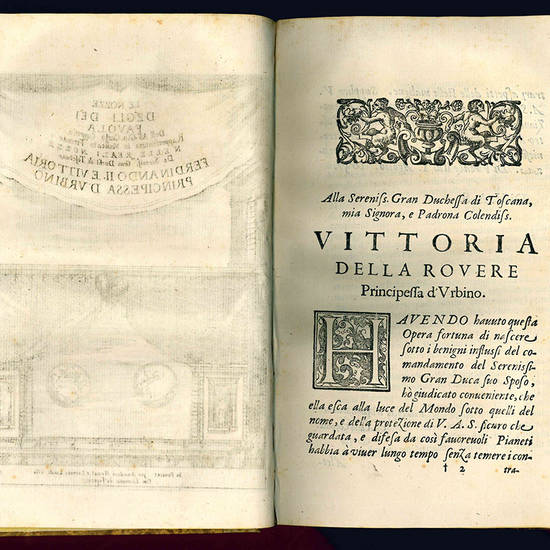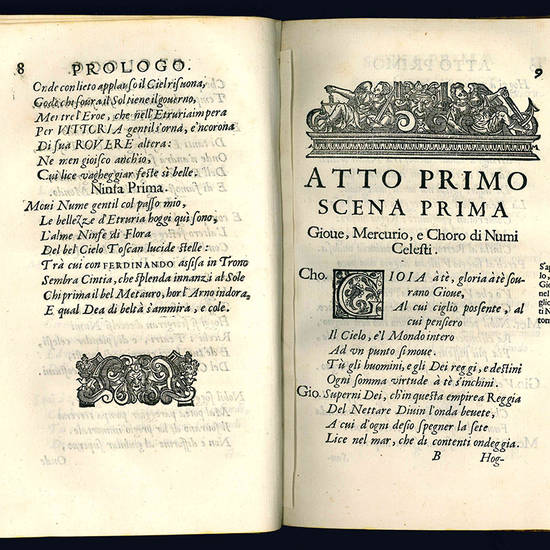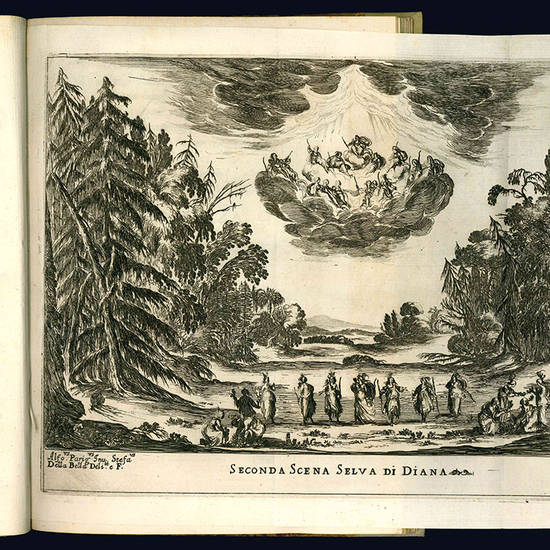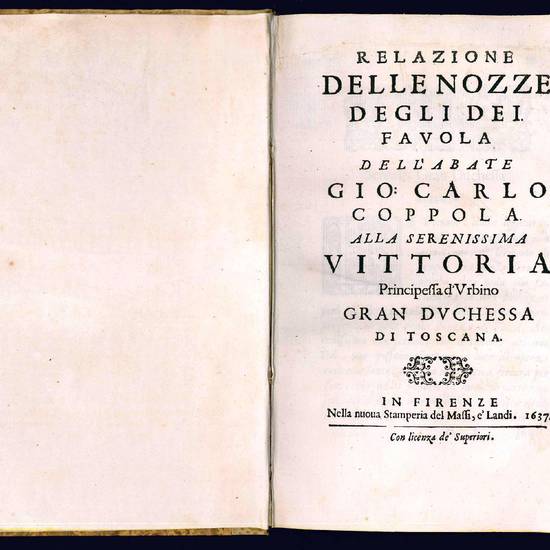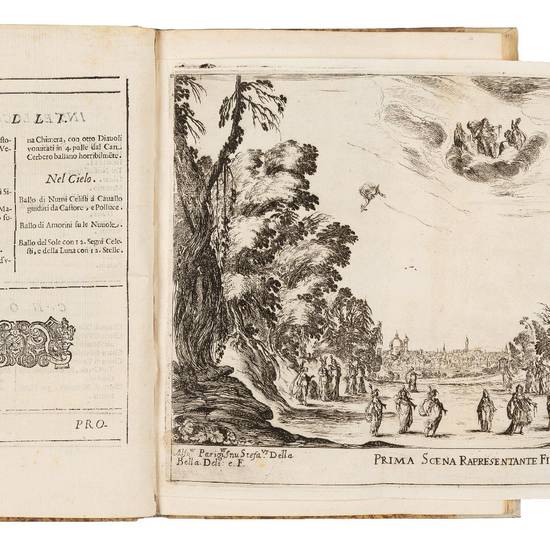Le nozze degli Dei, favola dell’Ab. Gio. Carlo Coppola rappresentata in musica in Firenze nelle reali nozze de Sereniss.mi Gran Duchi di Toschana Ferdinando II. e Vittoria principessa d’Urbino
Autore: COPPOLA, Giovanni Carlo (1599-1652)
Tipografo: Amadore Massi e Lorenzo Landi
Dati tipografici: Firenze, 1637
(Together with:) RONDINELLI, Francesco (1589-1665). Relazione delle nozze degli Dei, favola dell'abate Gio: Carlo Coppola. Alla serenissima Vittoria principessa d'Urbino Gran Duchessa di Toscana. In Firenze, nella nuova Stamperia del Massi, e' Landi, 1637.
Two parts in one volume, 4to (242x174 mm). 50, [2]; [8, including etched title page], 104 pp. and 7 double-page plates by Stefano della Bella after the set designs of Alfonso Parigi. Collation: A-F4 G2; †4 A-N4.Woodcut head- and tail-pieces, and initials. Eary 19th-century half vellum, morocco lettering-piece on spine. Upper margin of the first title page repaired, some insgnificant marginal foxing. An exceptionally clean copy.
FIRST EDITION of the libretto for this masque celebrating the wedding of Vulcan to Venus, written by Giovanni Carlo Coppola, the Bishop of Muro, to commemorate the marriage of Grand Duke Ferdinando II de' Medici (1610-1670) to Princess Vittoria della Rovere of Urbino (1622-1694) on 8 July 1637. Della Bella's etchings (his first major undertaking for the Medici court, where he succeeded Jacques Callot) are the only surviving record of Parigi's staging of this remarkable production. Coppola wrote the libretto, and the choreography was done by Agniolo Ricci.
The opera, first performed at the Palazzo Pitti on 8 July 1637, was the last to be held in the Medici court theatres. According to Rondinelli's contemporary description (Relazione delle nozze degli dei), the libretto was set to music by the five principal composers of Florence, who employed counterpoint and entrancing arias. The composers are unnamed, but evidently included Marco da Gagliano and Francesca Caccini (and, according to The New Grove, Jacopo Peri). The music was organized by the poet and composer Ferdinando Saracinelli, a collaborator with Domenico Mazzocchi, who may also have contributed to the music.
“The play was written in seven days, at the command of Duke Ferdinand, who ordered that it include spectacular scenes of the Heavens, the Seas, and the Infernal regions. The text was cut for performance but is printed in its entirety.” (Clubb).
Berlin Kat., 4116; Brunet, II, 262; De Vesme, 918-925; Nagler, Theater Festivals of the Medici, pp.162-74; Watanabe-O'Kelly & Simon 1285; Sonneck (opera librettos), p. 806; The New Grove Dictionary of Opera, III, 855; Clubb, 311.
[7482]

